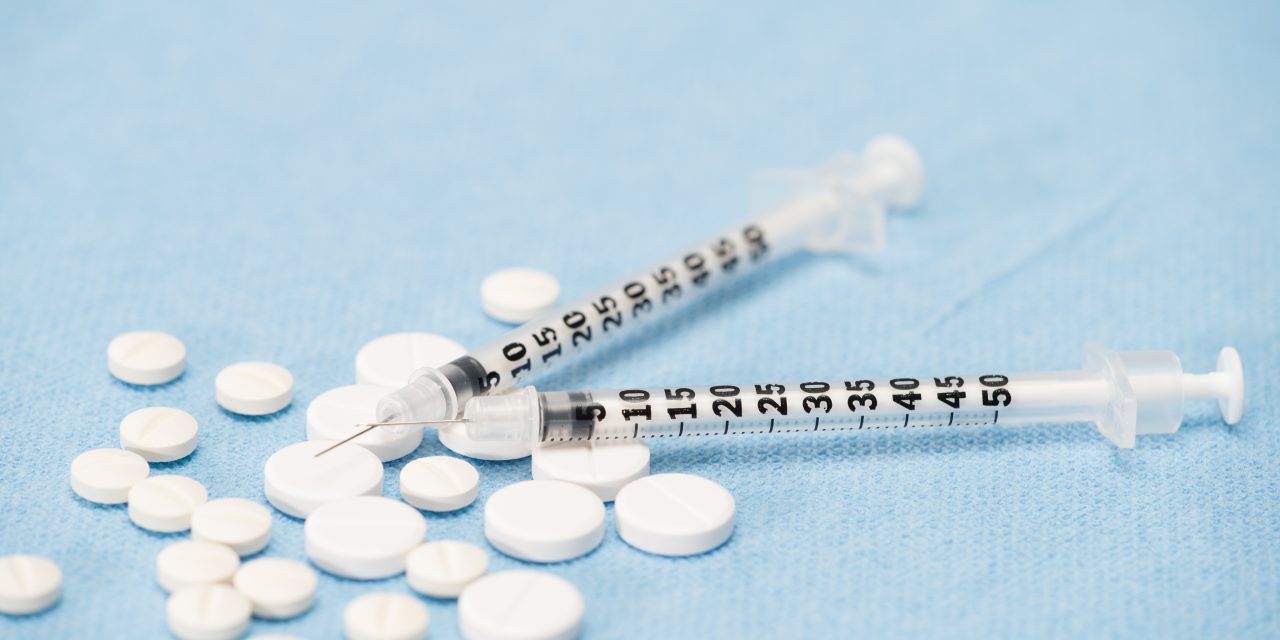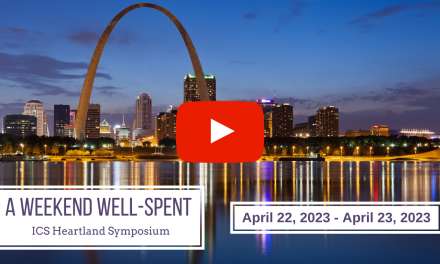
Is Inflammation the Bogeyman?

Overview
A recent review of patient intake forms showed that a surge of patients present to the office taking anti-inflammatory medications, particularly the non-steroidals (NSAIDs).
These medications include but are not limited to:
- Aspirin (Bayer)
- Ibuprofen (Motrin, Advil, Midol, Nuprin)
- Naproxen (Aleve)
- Diclofenac (Voltaren, Arthrotec)
- Celecoxib (Celebrex)
- Indomethacin (Indocin)
- Meloxicam (Mobic)
This is speculation on my part, but the recent trend of over-prescription of NSAIDs could be a “knee jerk” reaction to the prescription opioid epidemic. The pendulum may have swung from NSAIDs to opioids and now back to NSAIDs. It’s also worth considering that this could just be the ebb and flow of clinical practice. As a humorous aside, we all know that patients swear they have a deficiency of “Vitamin I.” For those wondering if you missed a day in laboratory diagnosis class, no, you didn’t. “Vitamin I” would be ibuprofen. We know how patients sometimes overuse ibuprofen for their bumps, bruises, aches or pains, all of which are manifestations of inflammation. But regardless of the source, is inflammation always the “bogeyman” to be chased away and avoided at all costs?
Recall from our basic pathology and physiology studies that inflammation has a role in the healing process.
The important points are the following:
- A patient can’t heal without inflammation.; Inflammation is one of the early phases of the healing process;
- Inflammation and tissue self-healing appears to be an evolutionary adaptation and, as such, is an “innate” mechanism;
- Anti-inflammatory medications alter the normal healing process; and
- It is still a bit controversial whether the administration of prescription or over-the-counter anti-inflammatory medications early in the healing process for many musculoskeletal (MSK) conditions provides additional benefit over other treatment options, including the conservative, non-drug, non-surgical treatments, and no treatment.
Stages of the Healing Response
It’s true that inflammation is part of the healing process. Millions or more years of evolution appear to have “hard-wired” the inflammatory response into our DNA (16). Inflammation facilitates tissue and wound healing as an automatic response to tissue trauma. This response appears to be naturally selected to help fight infection for survival purposes.
There are 3-4 recognized phases of the healing process (1, 2, 17). The phases in sequential order are hemostasis/degeneration, inflammation, proliferation (tissue regeneration) and maturation (tissue remodeling). Hemostasis occurs immediately after the initial injury. Hemostasis is the pooling of blood and fluid at the site of injury. This cascade of events causes tissue hypoxia (1). Lack of cellular exchange of nutrients leads to tissue degeneration or even necrosis. Inflammation follows shortly after the initial injury and hemostasis. The immune system triggers inflammatory cells to debride the area, get rid of metabolic waste products and reduce the chances for infection. This paves the way for the next phase, which is tissue proliferation. The growth of new tissue occurs slowly. This is highly linked to revascularization. Fresh blood flow brings in nutrients. Nutrients help lay the framework for what’s to come. Ultimately, that is the development of tissue integrity and resiliency (2).
The tissue must undergo a period of maturation or remodeling. Remodeling is the final phase of the body’s innate healing response. The tissues solidify. The tissue is never histologically and functionally the same as pre-injury levels; some degree of scarring is always present. However, the body does have an effective way of providing tissue that can resemble tissue prior to the injury. There is some overlap amongst the phases of healing, but inflammation is clearly a precursor to later stages of the healing process.
This review prompts the following questions:
- What are the consequences of altering the inflammatory process with NSAIDs in acute/subacute MSK injuries?
- What serious risks are posed by over-prescription and over-consumption of NSAIDs?
- When is inflammation generally considered to be bad?
Consequences of Altering the Inflammatory Process
It’s safe to say that Western Medicine has a high rate of prescription and utilization of NSAIDs for MSK pain syndromes. NSAID rates are particularly high in sports medicine and sports performance settings (8, 9, 10, 11). Utilization is also high in the elderly. NSAIDs are readily accessible, both over the counter and via simple prescription. Often, doctors and health care professionals recommend NSAIDs, and parents don’t think twice about taking or handing them to their children. These drugs do come with risks. One of the seldom talked about risks is the effect NSAIDs have on healing bone and soft tissues.
Bone
Several studies have investigated the link between fracture healing and NSAIDs. Findings of the studies have been mixed (23, 24, 36). The consensus recommendation to date is that clinicians should treat NSAIDs as a risk factor for bone healing impairment with the administration to be avoided in high-risk patients (23, 25, 26, 37). High-risk patients would include diabetics, smokers, patients with autoimmune diseases that impact callus formation, patients on corticosteroid medications, and patients where bony fusion is the goal. The studies also indicate that short term utilization in the immediate days after the injury can provide an analgesic effect; however, prolonged utilization throughout the course of fracture or fusion healing would be more apt to delayed union or non-union (33). Delayed union or non-union jeopardizes the clinical outcome. More work clearly needs to be done in this area; however, the basic science laboratory studies validate the clinical concern.
Soft Tissue
Research shows mixed results for anti-inflammatory drugs, namely traditional NSAIDs and Cox-2 inhibitors, for soft tissue healing. Some benefit has been described in the literature with improved tissue quality and outcomes, while additional studies show no benefit. Yet others have described delayed healing or altered tissue quality (18, 19, 27, 31, 32, 33, 34, 38).
Contradictions abound. Many studies are animal studies. Animal studies may not have a direct translation to humans for a variety of reasons. The findings are a reason to use caution with NSAIDs. On the other hand, a recent Chinese study compared three NSAIDS utilized post-surgically in arthroscopic surgical rotator cuff repairs. The study found that the three Cox inhibitors used were efficient and safe, with no significant differences in side effects and no delayed tendon healing (38).
Collagen Formation
Studies that support utilization in soft tissue healing typically look at collagen formation, tensile strength and capability to adapt to load. One of the studies differentiated the effects on soft tissue healing of traditional NSAIDs from Cox-2 inhibitors, with traditional NSAIDs showing promise in collagen synthesis and increased tensile strength in ligament healing when compared to the effects of Cox-2 inhibitors on ligament healing (33). Another study noted in animal models that Cox-2 inhibitors in tendons of lab rats had similar failure load rates, greater ability to handle tensile stress and reduced cross-sectional area indicative of less disorganized, degenerative tissue (31). The article suggests that Cox-2 inhibitors may have a role in the prevention of tendon thickening, which can be a sign of chronic tendinopathy.
The safety and efficacy of NSAIDs should be questioned. A systematic review and meta-analysis showed no major differences in soft tissue healing between Cox-2 inhibitor drugs, traditional NSAIDs, and tramadol for pain, restoration of function and swelling in acute soft tissue injuries of several areas of the body (5). The study concluded more work is needed in this area, and additional methodology is needed to compare the risk of adverse events amongst the Cox-2 inhibitor medications and traditional NSAIDs.
Another study questions the efficacy of NSAIDs, despite both widespread utilization with acute MSK injuries and some conferred benefits (19). The article later notes that Cox-2 inhibitors do have beneficial anti-inflammatory effects, and analgesic properties and appear to facilitate an earlier return to function after acute injury, but questions utilization in response to experimental animal model studies showing impaired mechanical strength of bone, ligament, and tendon. Impaired mechanical strength could negatively impact healing tissue and predispose to future injury. The study finishes by noting that the Cox-2 inhibitor rofecoxib increases adverse and potentially serious cardiovascular events, while traditional NSAIDs increase GI risks and were typically cheaper and equally effective as pain relievers.
Pulled from the Market
It should be mentioned at this point that rofecoxib, better known as Vioxx, was removed from the market due to safety concerns in 2004 (19, 21). Another Cox-2 inhibitor, Bextra, (valdecoxib) was also pulled from the market in 2005 due to safety concerns. Concerns centered on increased adverse cardiovascular events and skin reactions (28).
One last study compares the effects of several analgesics and anti-inflammatory drugs on soft tissue healing in rat patellar tendons (34). The analgesic options included celecoxib, valdecoxib, piroxicam, acetaminophen, ibuprofen, naproxen or control. The study found that the anti-inflammatory drugs, namely the selective and non-selective Cox inhibitors, had higher rates of failure. The patellar tendons required less force to fail. It is theorized that the Cox inhibitors altered the biomechanical properties of collagen at the injury site.
Exercise Induced Inflammation and DOMS
The sports medicine and sports performance community largely accept the utilization of NSAIDs. The stated goals are a reduction of inflammation, facilitation of recovery, and improved performance. The pattern typically starts early in life with high school athletes, namely contact athletes, showing strong usage rates (10). Traditional over-the-counter NSAIDs such as ibuprofen and naproxen are typically utilized in this demographic. NSAID use is also common in the endurance sports community of triathletes, bikers, swimmers, and runners (8,9).
Two recent studies question the notion that NSAIDs affect inflammation and performance in athletes (6,7). No differences were noted in exercise-induced inflammation markers, muscle damage or lipid peroxidation in a group was given low dose Cox-2 inhibitors vs. a placebo. These studies indicate that sports medicine personnel, “Dr. Mom” and “Dr. Dad” may need to rethink the routine practice of administering NSAIDs to athletes who do not have an active acute injury.
In summation:
1). Caution is strongly recommended when utilizing NSAIDs with bone healing.
2). There are mixed results with NSAID’s and Cox-2 inhibitors on healing soft tissue quality and clinical outcomes.
3). We should analyze and interpret these studies with caution because animal studies are frequently used. Animal studies do not necessarily translate to humans.
4). Potential for harm has been demonstrated, particularly with long-term extended use.
Serious Side Effects
Overconsumption of NSAIDs has been linked to increased risk of heart attack, stroke, gastrointestinal ulcers, heartburn, kidney damage, and liver damage. Recall that drugs such as Vioxx and Bextra were removed from the markets due to safety issues (21, 22). The makers of Vioxx (Merck) and Bextra (Pfizer) settled huge lawsuits for $4.85 billion and $2.3 billion respectively, due to adverse events, unscrupulous marketing tactics, routine recommendations for off-label usage, fabrication of research in support of their products and ignoring early-warning concerns of increased risks of adverse reactions.
It’s shocking that many patients are unaware of the risks. It’s a bit more shocking that NSAIDs are often combined with other medications to contribute to GI symptoms (12). It’s also baffling that physicians often do not prescribe the appropriate treatment regimen of a Cox-2 inhibitor or proton pump inhibitor with a traditional NSAID in those with known risk factors (13, 20). Cox-2 inhibitors along with a proton pump inhibitor showed the greatest reduction in GI symptoms. A Cox-2 inhibitor by itself was less likely to cause GI symptoms when compared to a traditional NSAID utilized with a proton pump inhibitor (14, 20). The use of an NSAID with a proton pump inhibitor or a Cox-2 inhibitor does not eliminate the chances for GI symptoms. It does reduce the risk. The elderly appear to be the most vulnerable to GI side effects; therefore, preventative strategies should be strongly considered (15, 20).
Seniors are a bit more susceptible to renal failure, hypertension and cardiac failure resulting from Cox-2 inhibitors (20). Cox-2 inhibitors have thrombotic potential, especially with high doses or prolonged use. Interaction can occur with anticoagulant medications, such as warfarin (Coumadin) and heparin. Warfarin and heparin increase the risk of adverse cardiovascular events.
In summary:
1). Patients at high risk of ischemic heart disease, stroke, and renal failure should proceed with extreme caution if recommended a Cox-2 inhibitor.
2). Patients at high risk for GI events should use either Cox-22 inhibitors instead of traditional NSAID’s or concurrently take a proton pump inhibitor with the traditional NSAID.
3). In all cases, judicious use of all NSAIDs should occur, following a comprehensive assessment of a patient’s health. Considerations should weigh the benefits vs. the risks.
Do NSAIDs Have a Role in Conservative MSK Treatment?
It is understood that the scope of practice for conservative care providers does not allow for the prescription of medication, including prescription NSAIDs. We can and do, however, see many patients in the office who have questions about these drugs. It is always advised that patients check with the prescribing physician. It is required by law that chiropractic physicians defer these questions back to the prescribing physician. That being said, we should have a working knowledge of prescription actions and interactions and should be able to offer some general support to our patients.
NSAIDs do have a role in conservative MSK treatment. The strongest support appears to be in the acute traumatic and post-surgical populations (39, 40, 41, 42, 43, 44, 45, 46, 47, 48). Administration of NSAIDs, namely Cox-2 inhibitors, routinely cuts down post-surgical use of narcotic medications. Administration of Cox-2 inhibitors, independently of, or in conjunction with, narcotics routinely decreased pain more than non-usage. The best practice currently recommends short term utilization of a period of days to weeks for pain control. It is theorized that decreased pain may assist in the rehab setting in restoring range of motion, ADL tolerances and improving quality of life measures.
Flare up of Chronic Conditions
Conceptually, NSAIDs may also have a role in acute flare-ups of chronic conditions. Examples would be conditions such as osteoarthritis, rheumatoid arthritis, gout, psoriatic arthritis, and lupus. The best evidence indicates a trial of days to weeks to reduce pain and restore the quality of life.
NSAIDs have a mixed role in cases of bone (fracture and fusion) and soft tissue healing. There is conflicting evidence of whether NSAIDs inhibit callus formation, fracture healing, and clinical outcomes; therefore, caution is recommended due to the absence of robust evidence. Widespread prescription is not recommended here.
Likewise, there is conflicting evidence that NSAIDs impair soft tissue healing. Some research does indicate that short term benefits may be provided; however, basic science laboratory studies indicate that the bone-tendon interface appears to be particularly susceptible to the effects of NSAIDs. Judicious use of short term duration weighing benefits vs. risks is recommended.
NSAIDs do not appear to benefit athletes when compared with placebo in the realm of sports performance and recovery from delayed onset muscle soreness. Bloodwork has shown no changes in inflammatory markers. Additional measures like pain or sports performance markers have shown no significant changes vs. placebo. Best practice would be to avoid prescription of NSAIDs to this demographic in view of no conferred benefits with the potential for risk.
Summary
The article started with a question. Is inflammation the bogeyman? I hope after reading this you think a bit differently about inflammation. I hope that you take a pause and re-evaluate your clinical practice patterns regarding inflammation and NSAIDs. Are you implementing the evidence to assist your patients or are you chasing the boogeyman?
About The Author
Dr. Pappas is a chiropractic physician, certified athletic trainer and certified strength and conditioning specialist. Dr. Pappas blends the best of physical medicine with the best of integrated medicine to help patients and athletes of all shapes and sizes. He utilizes tools such as chiropractic manipulation, soft tissue mobilization, biomedical acupuncture, functional movement based assessment, the McKenzie Method, strength training and conditioning, kinesiology taping, customized nutrition and specialty laboratory testing (blood, saliva, urine, and stool) when needed. Dr. Pappas’ clinical focus is sports medicine, conservative orthopedics, rehabilitation, and integrated medicine. His sports medicine interests are endurance athletes, overhead athletes (pitchers, throwers, volleyball players and tennis players), contact sports athletes (football, rugby, lacrosse, field hockey, soccer, and basketball) and Crossfit athletes. He has worked with athletes at all levels from professional to amateur. He reads and interprets the medical literature daily to stay abreast of cutting edge advances in his field. The doctor is a former sports medicine volunteer for Andrew High School in Tinley Park, IL. He is an avid runner and aspiring triathlete having completed 5 marathons, 5 half marathons and numerous 5 and 10k races. He has goals of qualifying and competing in the Boston and New York Marathons, the Ironman in Kona, Hawaii, and climbing Mt. Kilimanjaro in Kenya, Africa. He recently completed the Pikes Peak Ascent, a half marathon to the 14,115-foot summit of Pikes Peak. One day he hopes to serve his country as a team chiropractor for the United States Olympic teams and serve as a team chiropractor for one of the professional teams in Chicago. His mantra is “Why Put Off Feeling Good?” He can be reached by email at drdinopappas@gmail.com or at 708-275-1459.
References
1. https://www.ncbi.nlm.nih.gov/pmc/articles/PMC3596046/
2. https://www.ncbi.nlm.nih.gov/pubmed/17276196
3. http://d-scholarship.pitt.edu/6559/
4. http://d-scholarship.pitt.edu/6559/1/WeiShen_2006.pdf
5. https://www.ncbi.nlm.nih.gov/pubmed/20527999
6. https://www.ncbi.nlm.nih.gov/pubmed/24744468
7. https://www.ncbi.nlm.nih.gov/pmc/articles/PMC4477926/
8. https://www.ncbi.nlm.nih.gov/pubmed/19666628/
9. https://www.ncbi.nlm.nih.gov/pubmed/16679974
10. https://www.ncbi.nlm.nih.gov/pubmed/11869920
11. https://www.ncbi.nlm.nih.gov/pubmed/23528841
12. https://www.ncbi.nlm.nih.gov/pubmed/16416304
13. https://www.ncbi.nlm.nih.gov/pubmed/14585915
14. https://www.ncbi.nlm.nih.gov/pubmed/18294634
15. https://www.ncbi.nlm.nih.gov/pubmed/17313200
16. https://www.ncbi.nlm.nih.gov/pubmed/16202600
17. https://www.ncbi.nlm.nih.gov/pubmed/22797712
18. https://www.ncbi.nlm.nih.gov/pubmed/26130144
19. https://www.ncbi.nlm.nih.gov/pubmed/15831058
20. https://www.ncbi.nlm.nih.gov/pubmed/15813652
21. https://www.ncbi.nlm.nih.gov/pubmed/17612044
22. https://www.ncbi.nlm.nih.gov/pubmed/24261788
23. https://www.ncbi.nlm.nih.gov/pmc/articles/PMC3259713/
24. https://www.ncbi.nlm.nih.gov/pubmed/19240368
25. https://www.ncbi.nlm.nih.gov/pubmed/15161166
26. https://www.ncbi.nlm.nih.gov/pubmed/17973900
27. https://www.ncbi.nlm.nih.gov/pubmed/16210573
28. http://www.webmd.com/a rthritis/news/20050407/bextra-taken-off-market-celebrex-gets-warning#1
29. http://www.nytimes.com/2007/11/09/business/09merck.html
30. http://www.cbsnews.com/news/10-amazing-facts-about-pfizers-23b-bextra-settlement/
31. https://www.ncbi.nlm.nih.gov/pubmed/14521300
32. https://www.ncbi.nlm.nih.gov/pubmed/26315084
33. https://www.ncbi.nlm.nih.gov/pubmed/15161166
34. https://www.ncbi.nlm.nih.gov/pubmed/17452512
35. https://www.ncbi.nlm.nih.gov/pubmed/12590029
36. https://www.ncbi.nlm.nih.gov/pubmed/22552671
37. https://www.ncbi.nlm.nih.gov/pubmed/12953337
38. https://www.ncbi.nlm.nih.gov/pubmed/26711065
39. https://www.ncbi.nlm.nih.gov/pubmed/16171664
40. https://www.ncbi.nlm.nih.gov/pubmed/12590029
41. https://www.ncbi.nlm.nih.gov/pmc/articles/PMC400716/
42. https://www.ncbi.nlm.nih.gov/pubmed/16430794
43. https://www.ncbi.nlm.nih.gov/pubmed/16171664
44. https://www.ncbi.nlm.nih.gov/pubmed/15220020
45. https://www.ncbi.nlm.nih.gov/pubmed/15153083
46. https://www.ncbi.nlm.nih.gov/pubmed/11293556

















